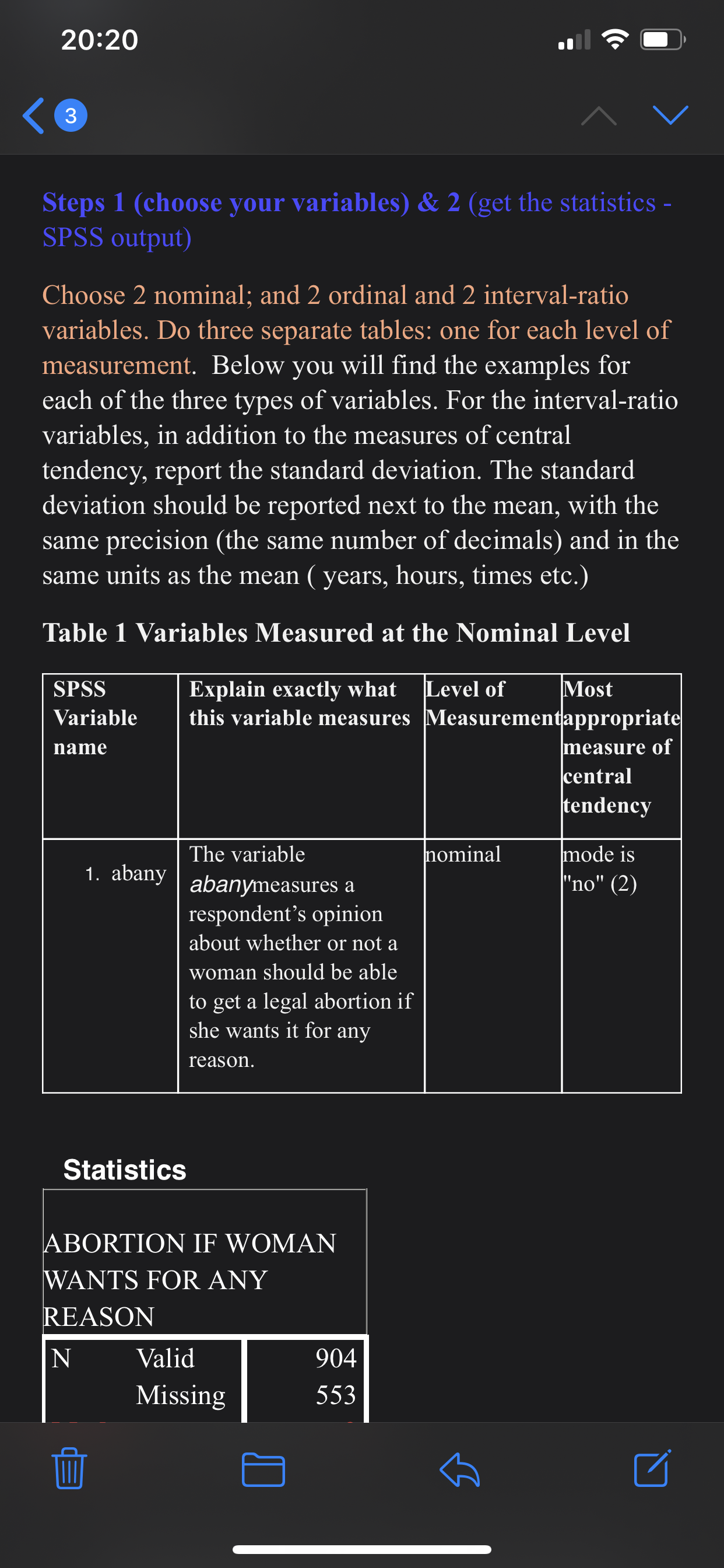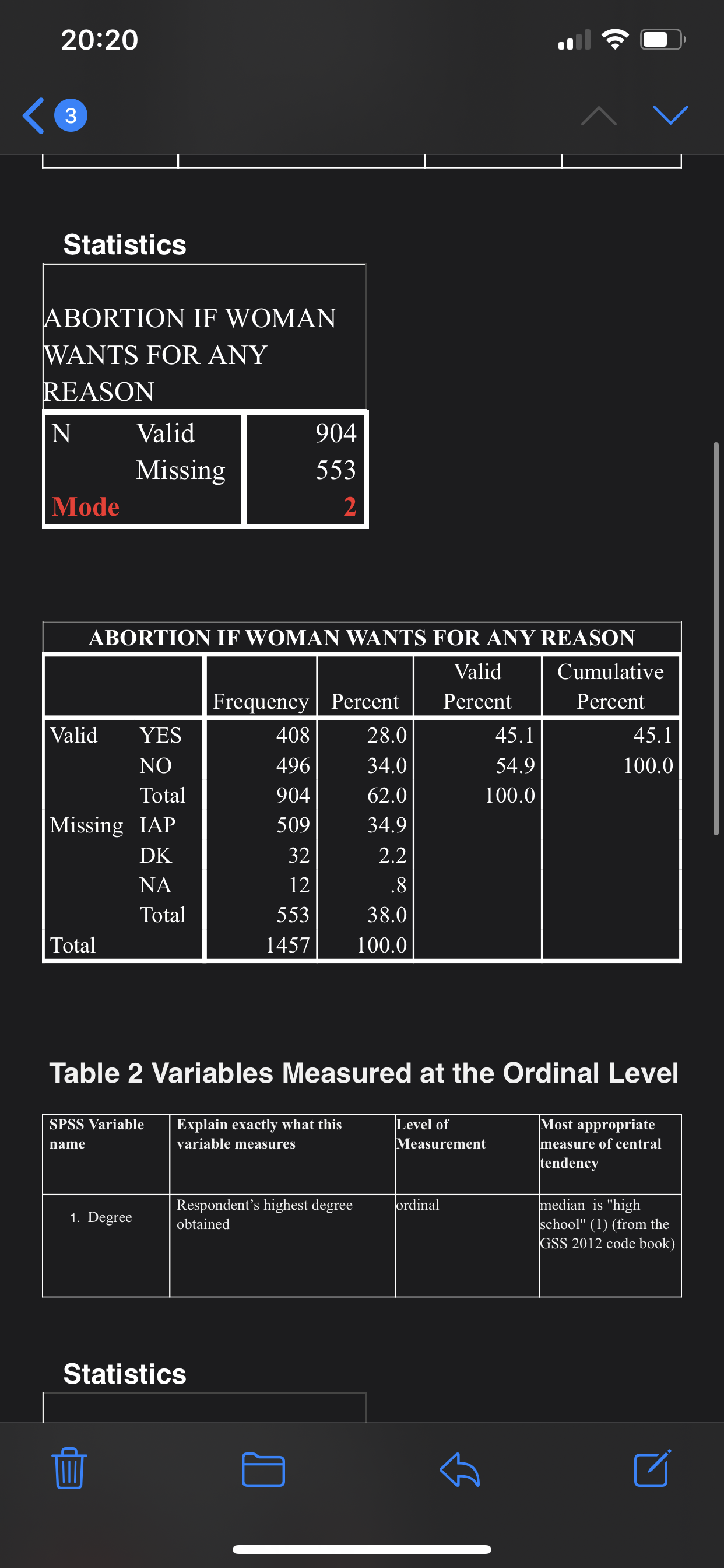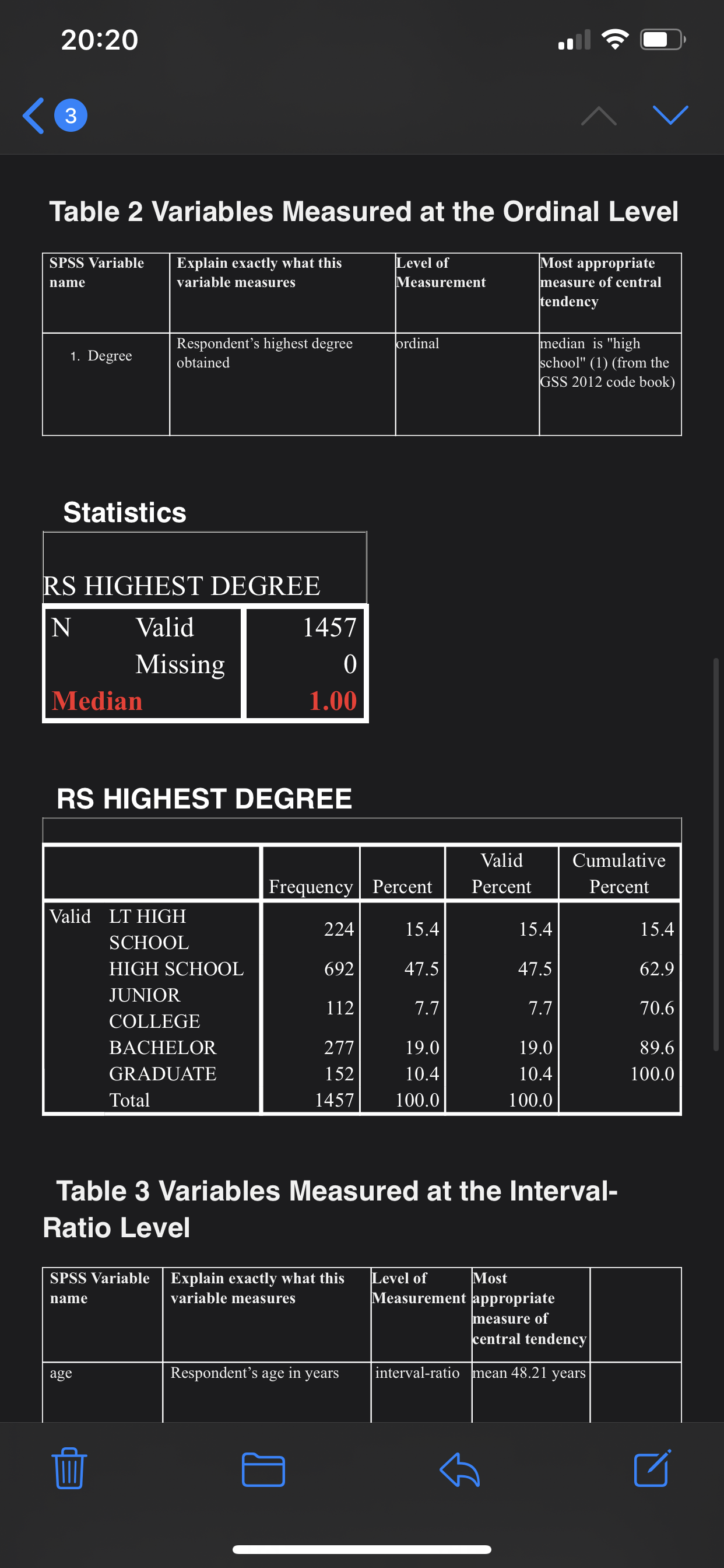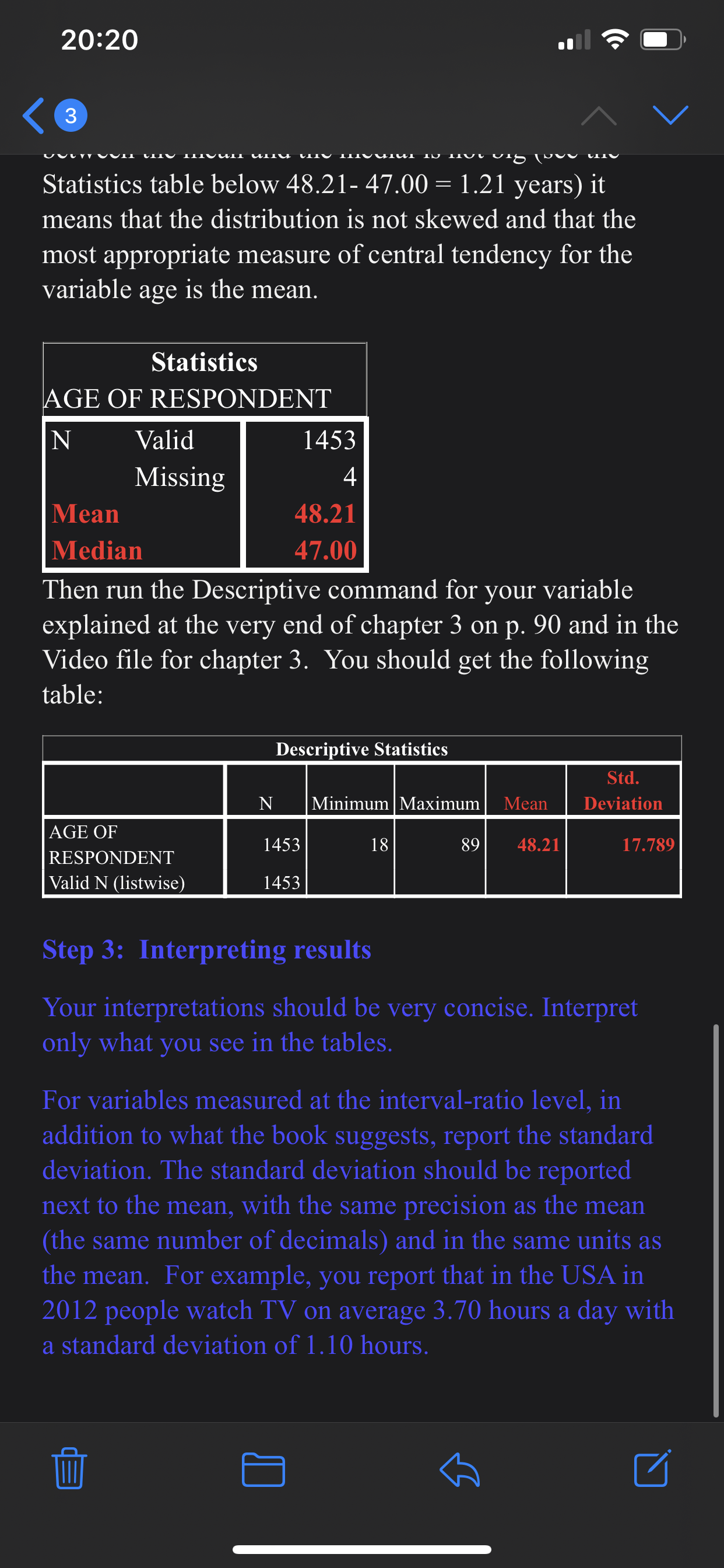Question
Choose 2 nominal; and 2 ordinal and 2 interval-ratio variables. Do three separate tables: one for each level of measurement.Below you will find the examples
Choose 2 nominal; and 2 ordinal and 2 interval-ratio variables. Do three separate tables: one for each level of measurement.Below you will find the examples for each of the three types of variables. For the interval-ratio variables, in addition to the measures of central tendency, report the standard deviation. The standard deviation should be reported next to the mean, with the same precision (the same number of decimals) and in the same units as the mean ( years, hours, times etc.)
Table 1 Variables Measured at the Nominal Level
SPSS Variable name
Explain exactly what this variable measures
Level of Measurement
Most appropriate measure of central tendency
- abany
The variableabanymeasures a respondent's opinion about whether or not a woman should be able to get a legal abortion if she wants it for any reason.
nominal
mode is "no" (2)
Statistics
ABORTION IF WOMAN WANTS FOR ANY REASON
N
Valid
904
Missing
553
Mode
2
ABORTION IF WOMAN WANTS FOR ANY REASON
Frequency
Percent
Valid Percent
Cumulative Percent
Valid
YES
408
28.0
45.1
45.1
NO
496
34.0
54.9
100.0
Total
904
62.0
100.0
Missing
IAP
509
34.9
DK
32
2.2
NA
12
.8
Total
553
38.0
Total
1457
100.0
Table 2 Variables Measured at the Ordinal Level
SPSS Variable name
Explain exactly what this variable measures
Level of Measurement
Most appropriate measure of central tendency
- Degree
Respondent's highest degree obtained
ordinal
medianis "high school" (1) (from the GSS 2012 code book)
Statistics
RS HIGHEST DEGREE
N
Valid
1457
Missing
0
Median
1.00
RS HIGHEST DEGREE
Frequency
Percent
Valid Percent
Cumulative Percent
Valid
LT HIGH SCHOOL
224
15.4
15.4
15.4
HIGH SCHOOL
692
47.5
47.5
62.9
JUNIOR COLLEGE
112
7.7
7.7
70.6
BACHELOR
277
19.0
19.0
89.6
GRADUATE
152
10.4
10.4
100.0
Total
1457
100.0
100.0
Table 3 Variables Measured at the Interval-Ratio Level
SPSS Variable name
Explain exactly what this variable measures
Level of Measurement
Most appropriate measure of central tendency
age
Respondent's age in years
interval-ratio
mean 48.21 years
First run the frequency table and let SPSS calculate the mean and the median for you. Since the difference between the mean and the medial is not big (see the Statistics table below 48.21- 47.00 = 1.21 years) it means that the distribution is not skewed and that the most appropriate measure of central tendency for the variable age is the mean.
Statistics
AGE OF RESPONDENT
N
Valid
1453
Missing
4
Mean
48.21
Median
47.00
Then run the Descriptive command for your variable explained at the very end of chapter 3 on p. 90 and in the Video file for chapter 3.You should get the following table:
Descriptive Statistics
N
Minimum
Maximum
Mean
Std. Deviation
AGE OF RESPONDENT
1453
18
89
48.21
17.789
Valid N (listwise)
1453
Step 3:Interpreting results
Your interpretations should be very concise. Interpret only what you see in the tables.
For variables measured at the interval-ratio level, in addition to what the book suggests, report the standard deviation. The standard deviation should be reported next to the mean, with the same precision as the mean (the same number of decimals) and in the same units as the mean.For example, you report that in the USA in 2012 people watch TV on average 3.70 hours a day with a standard deviation of 1.10 hours.





Step by Step Solution
There are 3 Steps involved in it
Step: 1

Get Instant Access to Expert-Tailored Solutions
See step-by-step solutions with expert insights and AI powered tools for academic success
Step: 2

Step: 3

Ace Your Homework with AI
Get the answers you need in no time with our AI-driven, step-by-step assistance
Get Started


